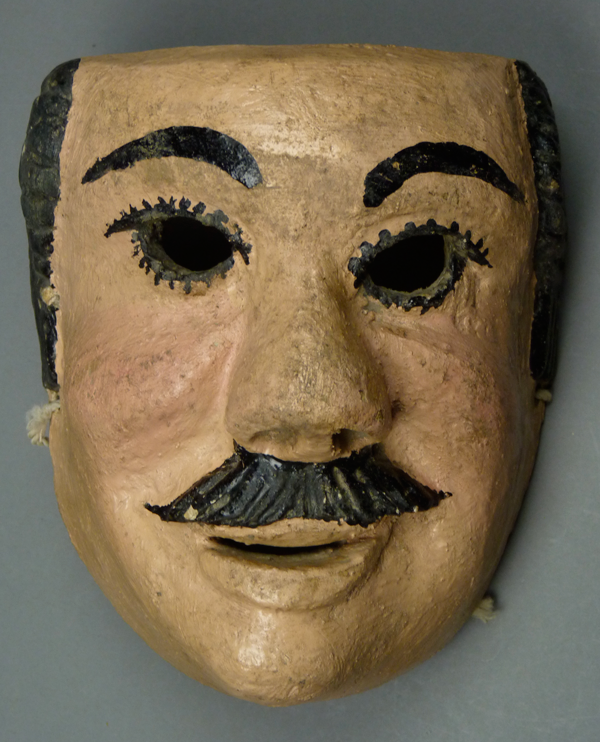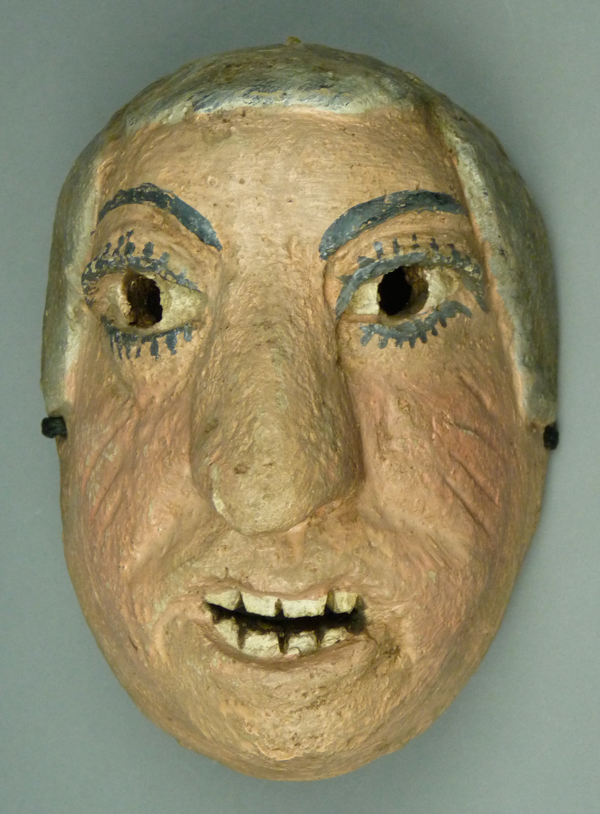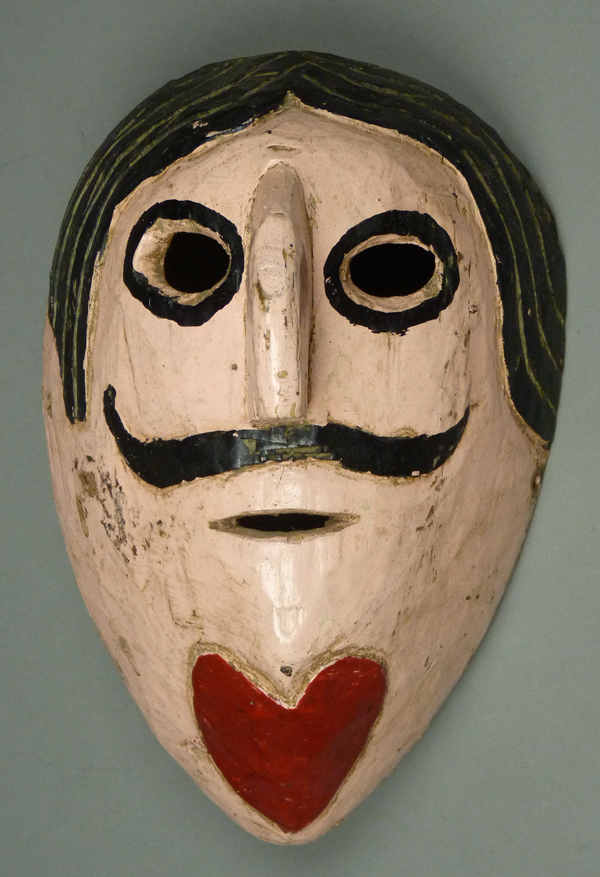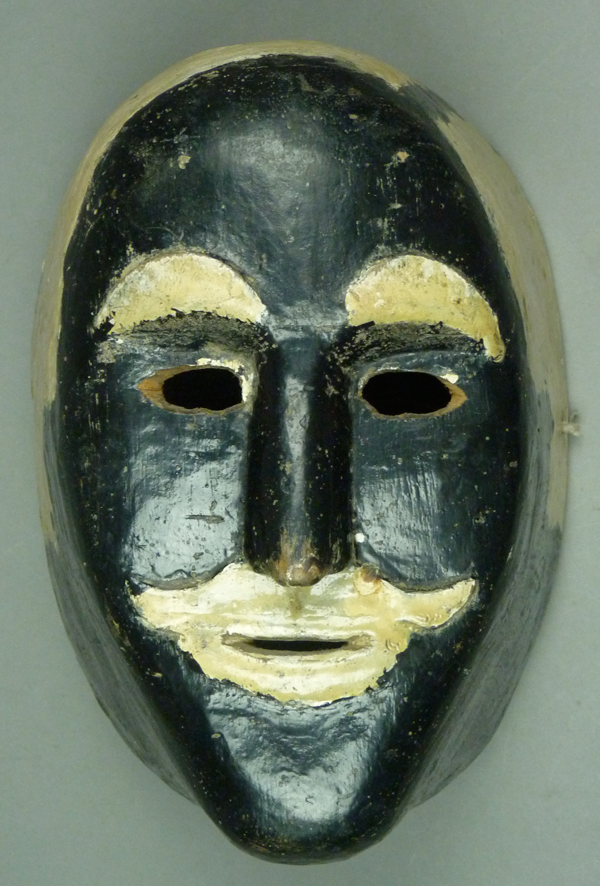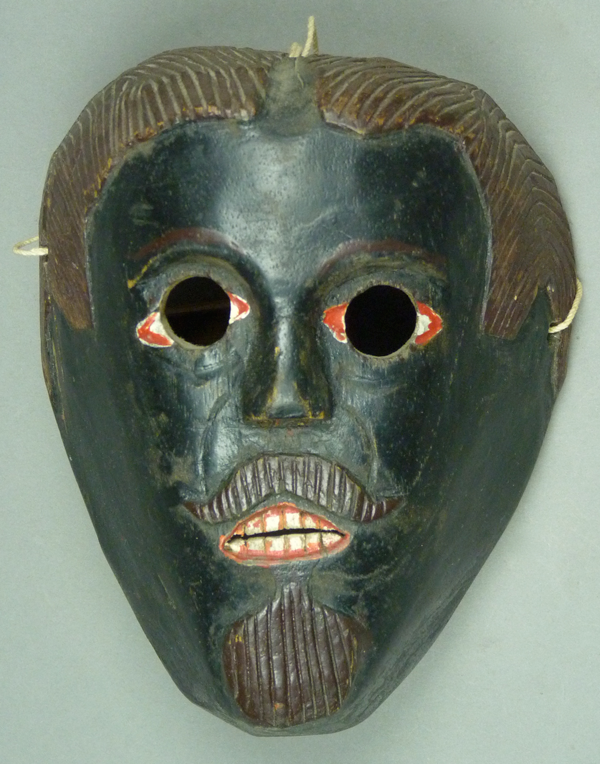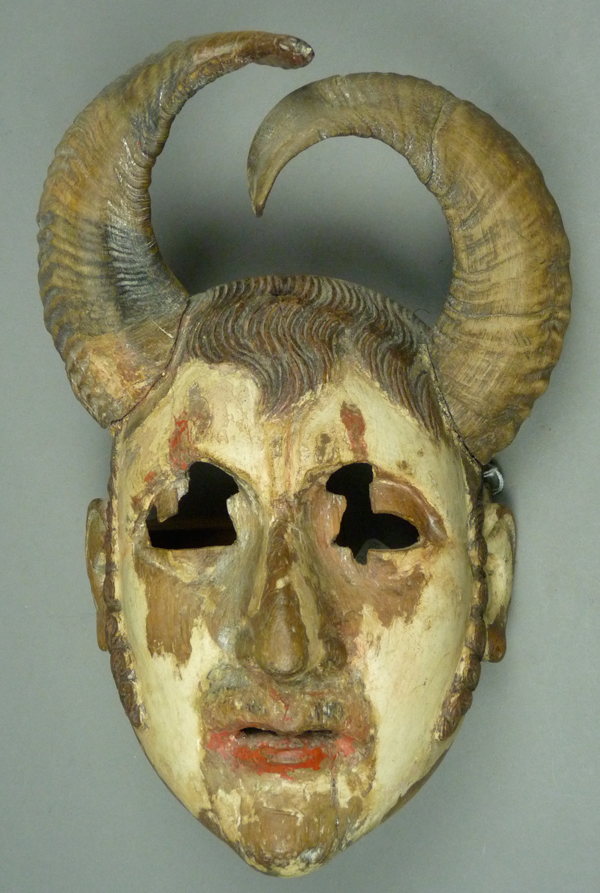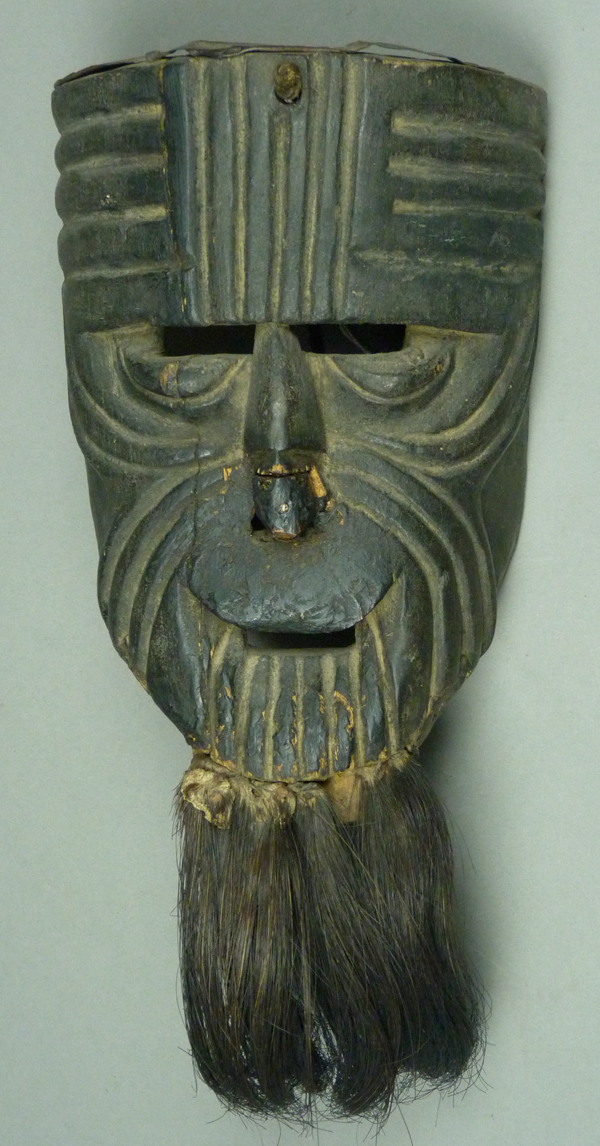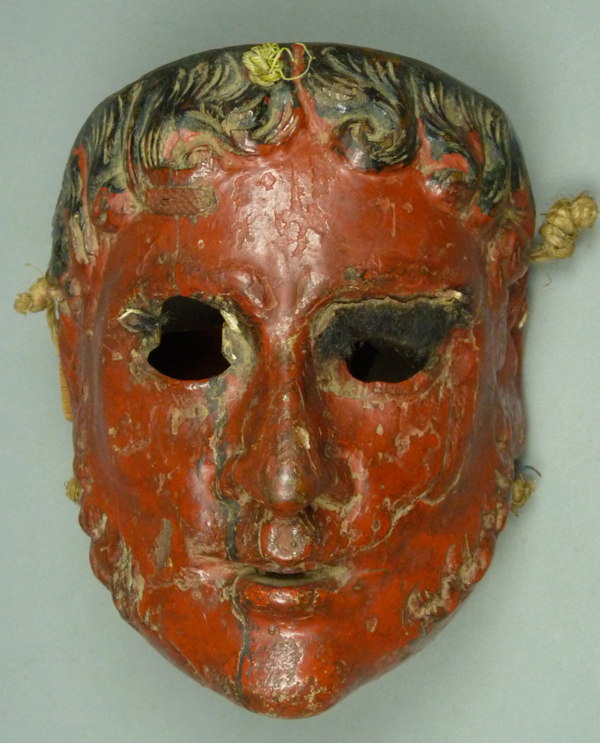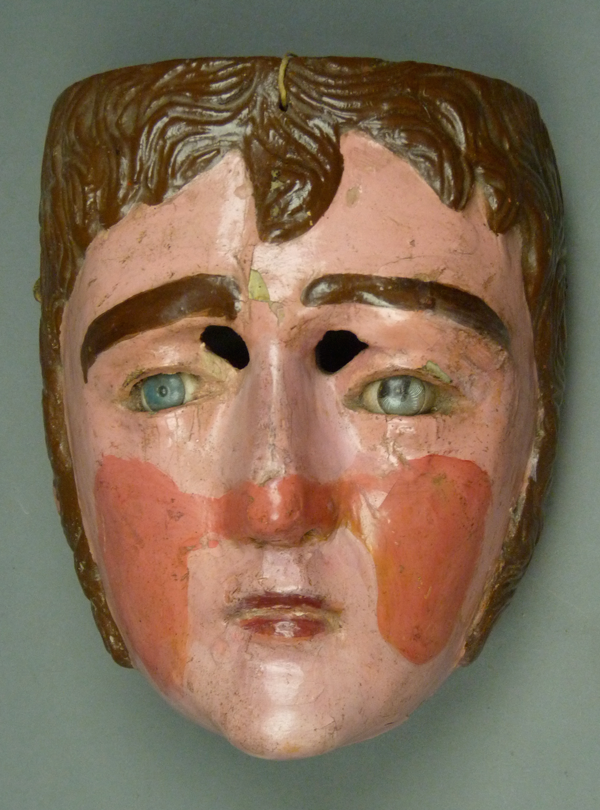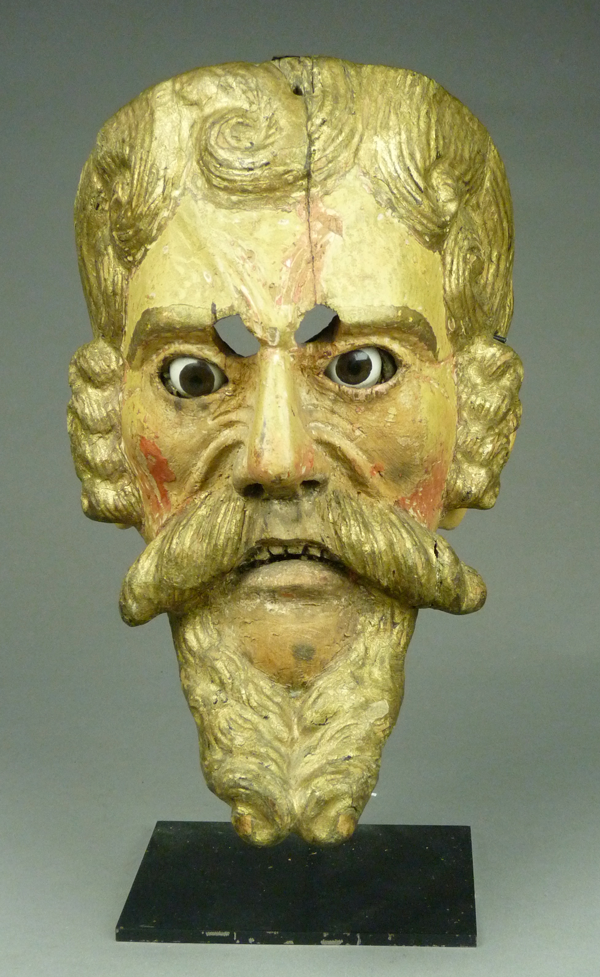In their book Máscaras (1981, pages 86 and 87), Jaled Muyaes and Estela Ogazón wrote of the masks worn in the Danza de los Xantolos—”The masks are of two different types… The more elaborate masks are characterized by their anthropomorphic realism and fine workmanship.” Today I will discuss those Viejo or Xantolo masks that are attractive and realistic in design.
Dinah Gaston, a Canadian, moved to Mexico in the 1990s in search of adventure and folk art. Roaming in the Huasteca, she was offered a group of masks in this anthropomorphic style. I found them particularly interesting because they appeared to be by the same hand as those in last week’s post, although they are Viejos from the Xantolos performance, and not Juanegros. I purchased this group—one male and four female masks—in 2002.
Actually Dinah’s life has many dimensions (see link that follows).
https://youngalbertawriters.wordpress.com/2013/03/04/act-out-theatre-with-dinah-gaston-weeks-12/
Here is the male mask. He mainly differs from last week’s group because he is younger looking and lacks obvious stigmatizing features.
This mask depicts a handsome gentleman.

